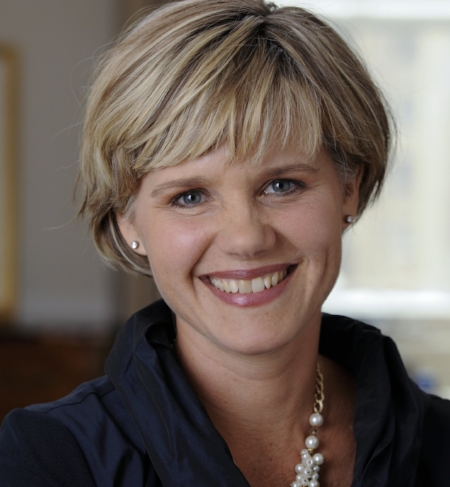Jackie VanderBrug, Managing Director and Investment Strategist, U.S. Trust

Please give us a bit of background on yourself, and how your organization plays a leadership role in the impact investing space.
My career has largely anchored on the intersection of disruptive innovations and market based approaches to social good. While my first job was analyzing social policy for The U.S. Congress, I soon transitioned to work with Fortune 500 firms, and then started both nonprofit and for-profit ventures. The different vantage points, or what Cathy Clarke of Duke University calls “multilingual leadership,” forced approaching challenges from a business, philanthropic and public policy perspective at all times.
As the managing director at Criterion Ventures, a hybrid consulting firm working with HNW individuals and large nonprofits on impact strategies, I also led the development of the field of gender lens investing. Today, the power of a gender lens in investing as an underexplored force for driving financial return and social impact.
Today, in my role as managing director and investment strategist for U.S. Trust, Bank of America Private Wealth Management, I’m responsible for defining and executing investment strategies focusing on impact investing initiatives across all asset classes. I also serve on the board of US SIF – The Forum for Sustainable and Responsible Investment.
Bank of America officially launched an impact investing program in 2013 to meet rapidly growing client demand for investments that have a positive impact on society or the environment without sacrificing the potential for performance. As of December 31, 2016, clients of Bank of America’s investment businesses had more than $11.3 billion in assets with a clearly defined ESG approach.
What will you be discussing at The Economist's Impact Investing event in New York on February 15?
The power of a gender lens in investment analysis. Or, as I’m increasingly apt to say the “convenient truth” that adding gender factors to your investment analysis reduces risk and increases opportunities. When seen in the context of the rising economic power of women this isn’t new, yet the level of data surprises many. We’ll review some of the data, but move quickly from the why to the how. Investors now have options from regionally focused seed stage funds to exchange traded funds. Gender lens investing isn’t small, soft or pink – it’s the basis of mainstream investment products, driven by global data and for all investors.
How has impact and ESG-oriented investing evolved in recent years?
Dramatically. Early on, impact investing was largely done out of a sense of duty or purpose and an alignment to values. Today, while these core underpinnings remain, they are bolstered by investing intelligently in ways that may help mitigate risk and align to drivers of sustainable growth and a transforming world. In addition to becoming more mainstream, impact investing now is empowering investors to look well beyond just negative screens to pursue positive change and competitive returns through a variety of investment vehicles.
Consumers and investors have also become more aware of the impact of the products they purchase and the companies they invest in. Data in this area has improved in quality and quantity, resulting in the creation of a breath of new ESG based indices. These additional factors, along with data on policies, practices, products and community engagement provides insight into a company’s DNA much like an x-ray provides more information to medical professionals. This information gives investors insights that complement fundamental financial analysis.
This content represents thoughts of the author and does not necessarily represent the position of Bank of America or U.S. Trust.
To learn more about the Impact Investing event, click here.